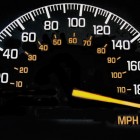For much of its history, the accounts payable (AP) function has processed invoices through a high-touch, mostly manual workflow. This has shifted in recent years with the rise of electronic invoicing (eInvoicing) solutions, but many AP departments still operate with a mostly manual invoice process. However, this change has not impact as many organizations as might be expected—especially given how mature many eInvoicing technologies are.
In fact, the biggest roadblocks to lower processing costs and enhanced AP performance are paper-based invoices and manual processing. This includes invoices received via mail, fax, PDF, and as an email attachment, all of which make up 70% of the invoices received by the average enterprise today. AP organizations may be receiving invoices in these formats but many have invested in scanning/imaging and data capture solutions or services to mitigate a flood of paper processing. This alleviates the need for manual data entry because the data is automatically extracted from an image of the invoice.
However, invoices processed in this way are not truly electronic invoices. Ardent’s definition of an electronic invoice is one that originates digitally and remains that way without the use of any scanning or data capture support. The average AP organization today receives approximately 30% of its invoices in this manner, which can include eInvoices, EDI or XML, PO-flips, or invoices created using web-forms. On the whole, eInvoices offer a significant improvement in visibility and data/analytics capability over paper-based invoices—among other advantages.
That paper-based invoices have remained such a huge proportion of the average enterprise’s invoices may have more to do with problems relating to supplier enablement. Suppliers have historically resisted changing to eInvoices for many reasons; a few of these reasons are a lack of technology implementation, costs borne by the supplier, and even an “opportunity cost” of learning a new invoicing system. Because of these barriers, paper-based invoices remain the norm in the accounts payable world.
The good news is that more suppliers are open to electronic invoicing methods than ever before. Enterprises seeking to move to eInvoicing from a paper-based process should ideally focus on scan and capture/imaging as a first step in the process. During this, the buying organization should make certain to communicate closely with suppliers so they are aware of what is happening within the AP team. In order to effect a greater shift to eInvoicing, enterprises need to keep the lines of communication open with suppliers, as well as educate suppliers on the benefits of eInvoicing. These advantages include reduced costs, improved visibility, and better ability to forecast.
The more that suppliers are aware of the benefits of eInvoicing, the more likely they are to be willing to move away from sending in paper-based invoices. Convincing suppliers of the benefits will not necessarily be easy—many suppliers have submitted paper invoices for many years—but the advantages by and large outweigh the many of the drawbacks, which will result in good results for both buyers and suppliers.
Check out these related articles for more:
eInvoicing Stats Every AP & Finance Leader Must See
Webinar Recap: Trendspotting — AP’s Top Trends for 2015…and Beyond
3 Reasons to Implement Scan-and–Capture Invoicing



